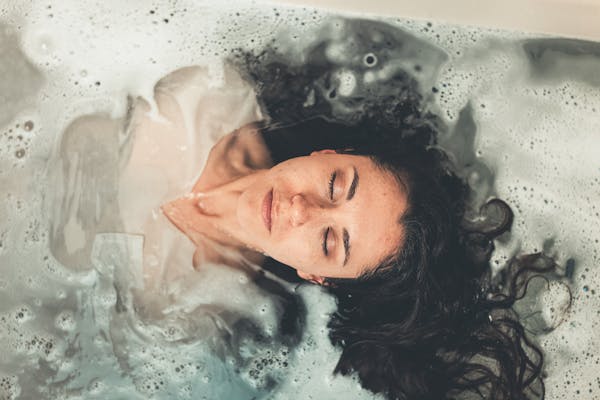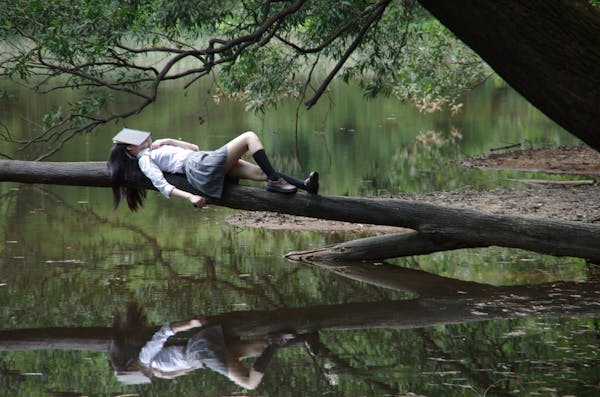
Are you tired of waiting for your hair to dry before dyeing it? Have you ever wondered if dyeing your hair when wet is possible? Well, wonder no more! In this blog post, we’ll explore the pros and cons of dyeing your hair when it’s wet and provide you with tips on how to do it right. Plus, we’ll let you in on the type of dye that works best for this method. Get ready to say goodbye to hours spent blow-drying and hello to a faster way of achieving a new look!
Dyeing your hair when it is wet
Dyeing your hair when it is wet may sound like a time-saving hack, but it’s not for everyone. If you have thick or long hair, dyeing wet strands can cause uneven results due to the dye diluting and dripping off. Additionally, if you’re using permanent dye, applying it on damp hair won’t give the same vibrant color as dry hair would.
However, if you have short or fine hair and want to darken your locks without spending hours waiting for them to air-dry fully, then coloring while they’re still slightly damp could work well. Semi-permanent dyes are also ideal since they don’t contain harsh chemicals that need heat activation to penetrate the follicles.
One advantage of dyeing your wet tresses is that the moisture helps distribute the color evenly from roots to ends easily. It also prevents over-processing since there’s less exposure time than with dry applications. Just keep in mind that any water on your scalp will dilute the formula so try not to soak too much during application.
Whether this method works for you depends on various factors such as your hair type and personal preference. So before trying this at home, do some research and test a small section first before committing to an all-over change!
The pros and cons of dyeing your hair when it is wet
Dyeing your hair when it is wet can be a convenient and time-saving option for those who are always on the go. However, there are pros and cons to this method that should be taken into consideration before deciding to dye your hair.
One of the advantages of dyeing wet hair is that it allows for more even color distribution throughout the strands. This is because when hair is wet, the cuticles tend to be more open, so the color can penetrate deeper into each strand. Additionally, you may find that dyeing wet hair results in a more vibrant and intense shade than if you were to apply it on dry hair.
On the other hand, one disadvantage of dyeing wet hair is that it can lead to uneven results if not done properly. Wetting your hair too much or applying too much pressure while spreading out the color could cause blotches or streaks in different areas of your head.
Another con to consider is that using hot tools such as blow dryers or flat irons immediately after dyeing might damage both your colored locks and scalp due to heat exposure.
Therefore, it’s essential always read instructions carefully before attempting any DIY coloring at home. It’s best practice testing small sections first instead doing whole-head coverage from start-to-finish without understanding how well product applies onto damp/wet tresses will prevent costly mistakes!
What type of dye to use
Choosing the right type of dye for your hair can be overwhelming with so many options available. It is important to consider factors such as the condition and texture of your hair, the desired color result, and any potential allergies or sensitivities.
If you have dry or damaged hair, opt for a semi-permanent or demi-permanent dye that contains nourishing ingredients like keratin or argan oil. These dyes will not only add color but also help improve the overall health of your locks.
For those looking for a more dramatic change in their hair color, permanent dyes are an option. However, be aware that they contain harsh chemicals that may cause damage to already fragile hair. Consider seeking professional advice before committing to this type of dye.
Another alternative is henna-based dyes which are natural and gentle on the hair. They come in various shades ranging from reds to blacks and provide long-lasting results without damaging effects.
It is up to you to decide what type of dye best fits your needs based on personal preferences and considerations related to your specific situation.
How to dye your hair when it is wet
Dyeing your hair when it is wet can be challenging, and if not done correctly, the results could be disastrous. Here are some tips to help you dye your hair when it’s wet effectively.
Ensure that your hair is clean and free of any products before attempting to dye it. The natural oils in your hair can prevent the color from absorbing properly.
Next, choose a semi-permanent or temporary dye for best results. These types of dyes are less damaging than permanent dyes and allow for better absorption on wet strands.
When applying the dye, use only small sections at a time and work quickly to avoid dripping or over-saturation. Use gloves to protect your hands from staining as well.
After application, leave the dye on for the recommended amount of time before rinsing with cool water until all excess color has been removed.
To finish off the process, apply conditioner throughout your hair to restore moisture lost during dying and style as desired once dry.
Dyeing wet hair is possible but requires patience and care for optimal results. Take these tips into account next time you attempt this method!
Tips for dyeing your hair when it is wet
When dyeing your hair while it is wet, there are a few things to keep in mind to ensure the best possible outcome. One tip is to use a semi-permanent or temporary dye as opposed to a permanent one. This type of dye tends to be more forgiving and will allow for color correction if needed.
Another important tip is to section off your hair and work in small areas at a time. This will help ensure even coverage and prevent missed spots. Additionally, make sure you have all necessary supplies on hand before starting, such as gloves, applicator brush, and old towels or cloths for any spills.
It’s also crucial not to overload your hair with too much product when applying the dye. Use only enough product needed for each section of hair and avoid over saturating it. Doing so can lead to uneven coloring and potential damage.
Once the dye has been applied, cover your head with a plastic cap or shower cap for added moisture retention during processing time. And always follow manufacturer instructions regarding timing before rinsing out thoroughly with cool water.
By following these tips when dyeing your hair while wet, you can achieve beautiful results without compromising its health!
Conclusion
After all is said and done, dyeing your hair when it is wet can be a great option for those who want to save time or achieve a more subtle color change. However, it’s important to consider the potential risks and drawbacks before taking the plunge. Make sure you choose the right type of dye for your hair texture and avoid over-saturating your locks with product. With these tips in mind, you’ll be able to enjoy beautifully colored hair that looks healthy and vibrant!




